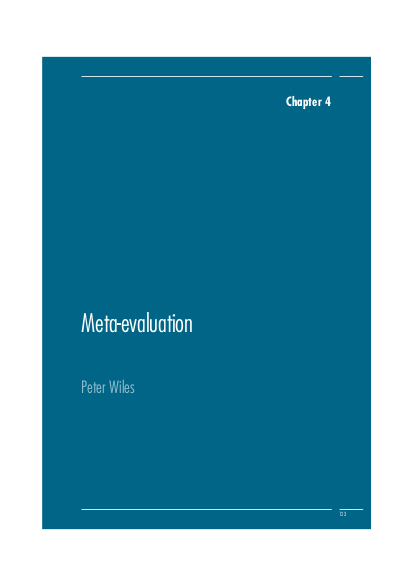ALNAP Review of Humanitarian Action in 2004: Capacity Building

The purpose of the annual ALNAP meta-evaluation is to provide an overall assessment and review of evaluations of humanitarian action (EHAs) in order to identify trends in quality. This chapter also aims to provide examples of good practice, and to capture some of the dynamics of EHA, arising from feedback from evaluation managers and evaluators. The main aim of the meta-evaluation is to provide information for improvements in practice. As defined by Lipsey (2000), meta-evaluation is ‘meta-analysis and other forms of systematic synthesis of evaluations providing the information resources for a continuous improvement of evaluation practice’.
This meta-evaluation is based on an assessment of 30 evaluation reports on evaluations conducted during 2003 and 2004, and submitted to ALNAP for this year’s Review of Humanitarian Action1 (Annex 3). Section 4.2 below covers the meta-evaluation process, while Section 4.3 gives an overview of the reports in this year’s set. Section 4.4 focuses on joint-agency initiatives, and Section 4.5 provides an overview of the meta-evaluation results. Section 4.6 looks in detail at each of the five main elements of the quality proforma (terms of reference; evaluation approach, methods and practice; contextual analysis; the intervention; the report). Section 4.7 deals with overall conclusions, and Section 4.8 looks at future issues for the ALNAP meta-evaluation.